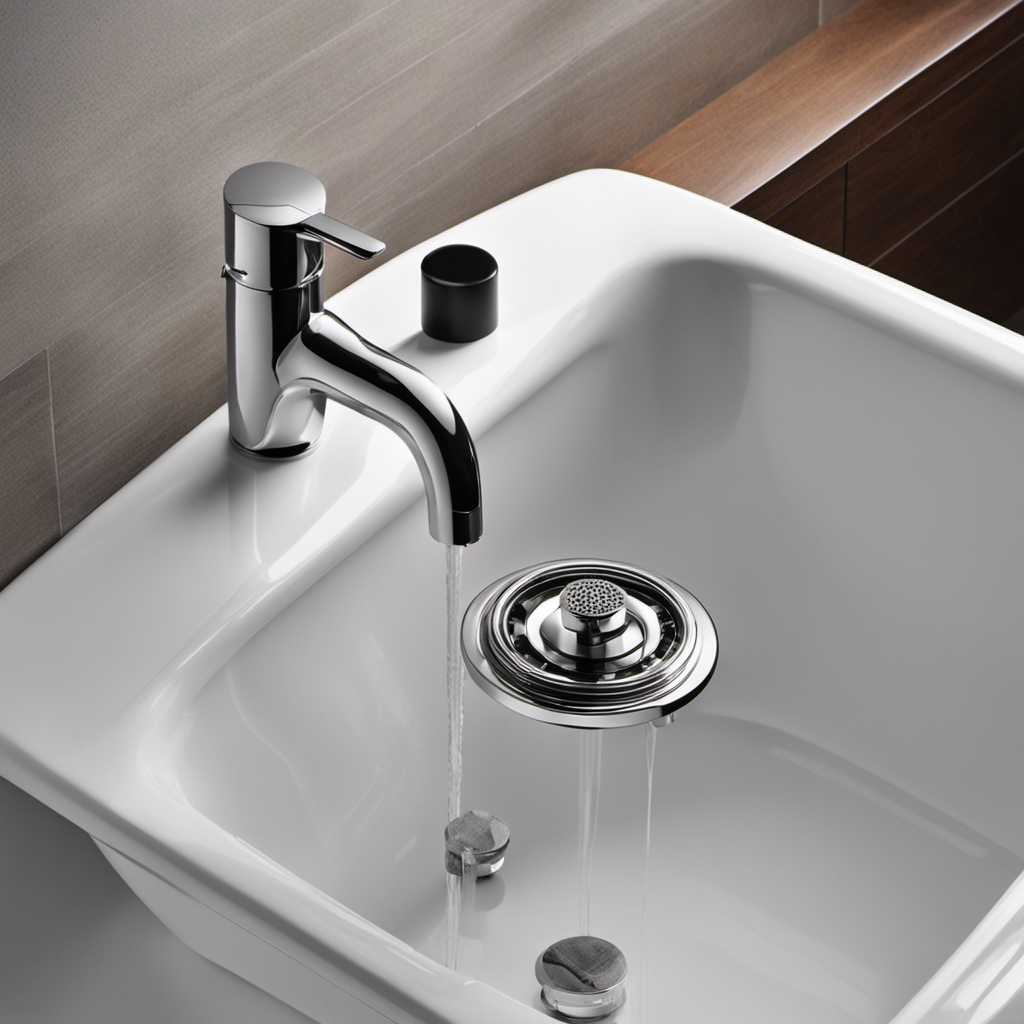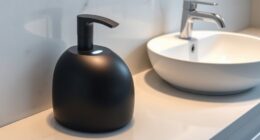Ever wondered just how hot your bathtub can get? Well, get ready for a steamy revelation!
In this article, we’ll delve into the ideal temperature for a bathtub and explore the factors that affect the water temperature.
We’ll also provide a safe range for bathing and offer tips on measuring and adjusting the temperature to your liking.
So sit back, relax, and prepare to take your bath experience to a whole new level of comfort.
Key Takeaways
- The ideal temperature for a bathtub is typically around 100 degrees Fahrenheit.
- Factors such as weather, insulation, water flow, and ambient room temperature can affect the bathtub water temperature.
- It is important to keep the water temperature within a safe and recommended range to avoid health risks.
- Use a thermometer to accurately measure the temperature of the bathwater and adjust it gradually to prevent discomfort or burns.
The Ideal Temperature for a Bathtub
The ideal temperature for a bathtub is typically around 100 degrees Fahrenheit. This temperature provides a comfortable and relaxing experience for most people. However, it is important to note that the ideal temperature may vary depending on personal preferences and health conditions.
When choosing a bathtub, it is recommended to consider the best bathtub brands that offer temperature control features, ensuring that you can easily adjust the water temperature to your liking.
Additionally, cold water bathing has its own benefits, such as reducing inflammation, improving blood circulation, and promoting muscle recovery. However, it is crucial to be cautious when using cold water, as it can cause discomfort and even hypothermia if not managed properly.
Understanding the ideal temperature and the benefits of cold water bathing is essential for creating a soothing and rejuvenating bathing experience.
Now, let’s explore the factors that affect bathtub water temperature.
Factors That Affect Bathtub Water Temperature
To get the right water temperature in your tub, you need to consider factors like water flow and the ambient room temperature.
One factor that can have an impact on bathtub water temperature is the weather. During colder months, the cold air can cool down the water in your tub more quickly, making it difficult to maintain a consistent temperature. On the other hand, during hotter months, the warm air can increase the temperature of the water, making it too hot for comfort.
Another factor to consider is the effect of insulation. Well-insulated bathtubs can help retain heat, keeping the water at a desired temperature for longer periods. Conversely, poorly insulated bathtubs may lose heat quickly, resulting in a decrease in water temperature.
Safe Temperature Range for Bathing
For a safe and comfortable bathing experience, it is important to keep the water temperature within a recommended range. Bathing in excessively hot water can pose serious health risks, such as burns, dehydration, and dizziness.
To ensure the water temperature is safe, it is beneficial to use a thermometer to monitor the temperature. This will allow you to adjust the temperature accordingly and avoid any potential harm. Using a thermometer provides accurate readings, giving you peace of mind knowing that the water is at the right temperature. It eliminates any guesswork and helps prevent the risk of scalding or discomfort caused by water that is too hot or too cold.
By using a thermometer, you can easily maintain the recommended temperature range, ensuring a safe and enjoyable bathing experience.
To measure the temperature of your bathtub water, follow these simple steps: [transition sentence to subsequent section]
How to Measure the Temperature of Your Bathtub Water
Using a thermometer, you can easily measure the temperature of your bathwater to ensure it is safe and comfortable. Here are three reasons why measuring the temperature accurately is important:
-
Prevent Burns: Accurate temperature measurement helps you avoid scalding yourself with water that is too hot. Water above 120 degrees Fahrenheit can cause severe burns in just a few seconds.
-
Promote Relaxation: By measuring the temperature of your bathwater, you can ensure it falls within the ideal range of 98-104 degrees Fahrenheit, which promotes relaxation and relieves muscle tension.
-
Protect Children: Children have more sensitive skin than adults, making it crucial to measure the temperature accurately before allowing them to bathe. By ensuring the water is not too hot, you can prevent accidental burns and keep them safe.
Temperature sensors in thermometers provide precise measurements, allowing you to enjoy a safe and comfortable bathing experience.
Tips for Adjusting Bathtub Water Temperature
Make sure you adjust the water temperature gradually to avoid sudden changes that could be uncomfortable or unsafe.
When adjusting the water temperature in your bathtub, it’s important to consider both the bathtub water heater and the water pressure.
Start by locating the bathtub water heater, which is usually located in the basement or utility room. Adjust the temperature setting on the water heater to your desired level. Keep in mind that higher temperatures can increase the risk of burns, so it’s best to keep the temperature around 120 degrees Fahrenheit.
Additionally, adjusting the water pressure can also affect the water temperature. If the water pressure is too high, it can cause the water to come out hotter than desired.
To adjust the water pressure, locate the water pressure regulator, which is typically found near the main water supply. Use a screwdriver to adjust the regulator, lowering the pressure if necessary.
Frequently Asked Questions
Can I Use a Regular Thermometer to Measure the Temperature of My Bathtub Water?
You can use a regular thermometer to measure your bathtub water temperature. However, keep in mind that its accuracy may vary. Alternatively, you can explore other temperature measurement methods for more precise results.
Is It Safe to Take a Hot Bath During Pregnancy?
Taking a hot bath during pregnancy can be safe and beneficial. It helps relax muscles, reduces stress, and promotes better sleep. If concerned about the temperature, use a thermometer. Other ways to unwind include meditation and gentle exercise.
How Long Should I Wait for the Water to Cool Down Before Getting Into the Bathtub?
Before getting into the bathtub, you should wait until the water temperature is safe. This ensures bathtub safety and prevents any potential harm. Take the time to let the water cool down for your own well-being.
What Are the Potential Risks of Soaking in Water That Is Too Hot?
Soaking in water that is too hot can pose risks of overheating and have detrimental effects on your skin. It is important to be aware of the temperature and ensure it is safe before submerging yourself.
Are There Any Safety Precautions I Should Take When Adjusting the Temperature of My Bathtub Water?
When adjusting your bathtub temperature, it’s important to prioritize safety to prevent burns. Take precautions like testing the water with your hand or a thermometer, gradually adjusting the temperature, and keeping children away from hot water sources.
Conclusion
In conclusion, it’s important to maintain the ideal temperature for your bathtub for a relaxing and safe bathing experience.
Factors such as water heater settings, insulation, and personal preferences can affect the water temperature.
For most adults, it’s recommended to keep the water temperature between 100-104 degrees Fahrenheit. For children and elderly individuals, a temperature range of 95-100 degrees Fahrenheit is suitable.
Interestingly, studies have shown that soaking in a hot bathtub for 30 minutes can burn approximately 140-150 calories. This makes it a beneficial activity for weight management.










